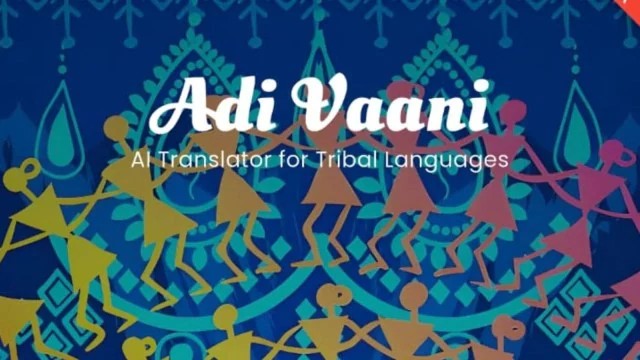
Govt Launches AI-Powered ‘Adi Vaani’ App to Translate and Preserve Tribal Languages

 :
| Updated On: 02-Sep-2025 @ 10:00 am
:
| Updated On: 02-Sep-2025 @ 10:00 amSHARE
The Ministry of Tribal Affairs has launched the beta version of ‘Adi Vaani’, an Artificial Intelligence (AI)-based translation tool designed to preserve, promote, and translate tribal languages across India. The app is a major initiative toward the conservation of India’s rich linguistic diversity, especially focusing on tribal mother tongues, many of which are endangered.
The development of Adi Vaani was undertaken by a consortium led by IIT-Delhi, along with Birla Institute of Technology and Science-Pilani, IIIT Naya Raipur, and tribal research institutes from Jharkhand, Odisha, Madhya Pradesh, Chhattisgarh, and Meghalaya. According to the 2011 census, India has a Scheduled Tribe (ST) population of 10.45 crore people, who together speak 461 tribal languages. Out of these, 71 are distinct mother tongues, but linguistic diversity is under threat, as 82 tribal languages are vulnerable and 42 critically endangered.
The app is expected to serve as a foundation for larger language models dedicated specifically to tribal languages, bridging the gap between tribal communities and mainstream communication and education. Initially, the app will provide translation services for Bhili, Gondi, Santali, and Mundari—some of the most widely spoken tribal languages. For example, Bhili, the most widely spoken non-scheduled language in India, is spoken by over one crore people in Madhya Pradesh, Gujarat, Maharashtra, Rajasthan, and the Union Territory of Dadra and Nagar Haveli. In its next phase, the app will expand its services to include Kui (spoken in Odisha) and Garo (spoken in Meghalaya, Assam, and parts of Tripura). The beta version will be officially available for download on the Google Play Store from Friday.
The initiative is being aligned with the Adi Karmayogi Abhiyan, another government program aimed at creating grassroots tribal leadership cadres. Through such initiatives, the government hopes to ensure that tribal communities embrace technology while also retaining their linguistic and cultural heritage.
Developing this app required the collection, collation, and validation of vast amounts of corpus data from tribal languages—a challenging task, given their largely oral traditions. More than 250 native speakers, educators, teachers, and community leaders were directly involved in the project. According to Prof. Sandeep Kumar of IIT-Delhi, these contributors created dictionaries, translated NCERT textbooks, and documented folklore and literature in tribal languages. They also worked on translating standard Hindi and English texts into tribal languages, thus enriching the corpus for training the AI models. By documenting oral traditions into written forms, the project ensures long-term preservation of tribal linguistic knowledge.
The app has also integrated tribal language primers to support foundational learning in tribal mother tongues. The Ministry of Education, through NCERT and in collaboration with the Central Institute of Indian Languages, Mysuru, has developed primers for 117 languages, of which 89 are tribal languages. The Adi Vaani app incorporates some of these, including primers in Santali, Warli, and Pawri, thereby making it an effective educational resource.
During the rollout event, Vibhu Nayar, Secretary of the Ministry of Tribal Affairs, emphasized that the translation model would not only improve cultural preservation but also help in the effective implementation of government schemes at the grassroots level. The app is also equipped with OCR (Optical Character Recognition) technology, enabling easier access to education materials for students in their native languages. This feature will make it possible for tribal students to read textbooks and documents in their own mother tongues, fostering better inclusion in the education system.
Overall, the launch of Adi Vaani marks a significant step in India’s digital transformation journey, blending AI technology with cultural preservation. It reflects the government’s efforts to protect endangered tribal languages, strengthen educational outreach, and empower tribal communities by integrating them into digital and developmental frameworks. By making these languages accessible through AI, the initiative has the potential to safeguard India’s linguistic heritage while enabling better social, cultural, and educational outcomes for tribal populations.